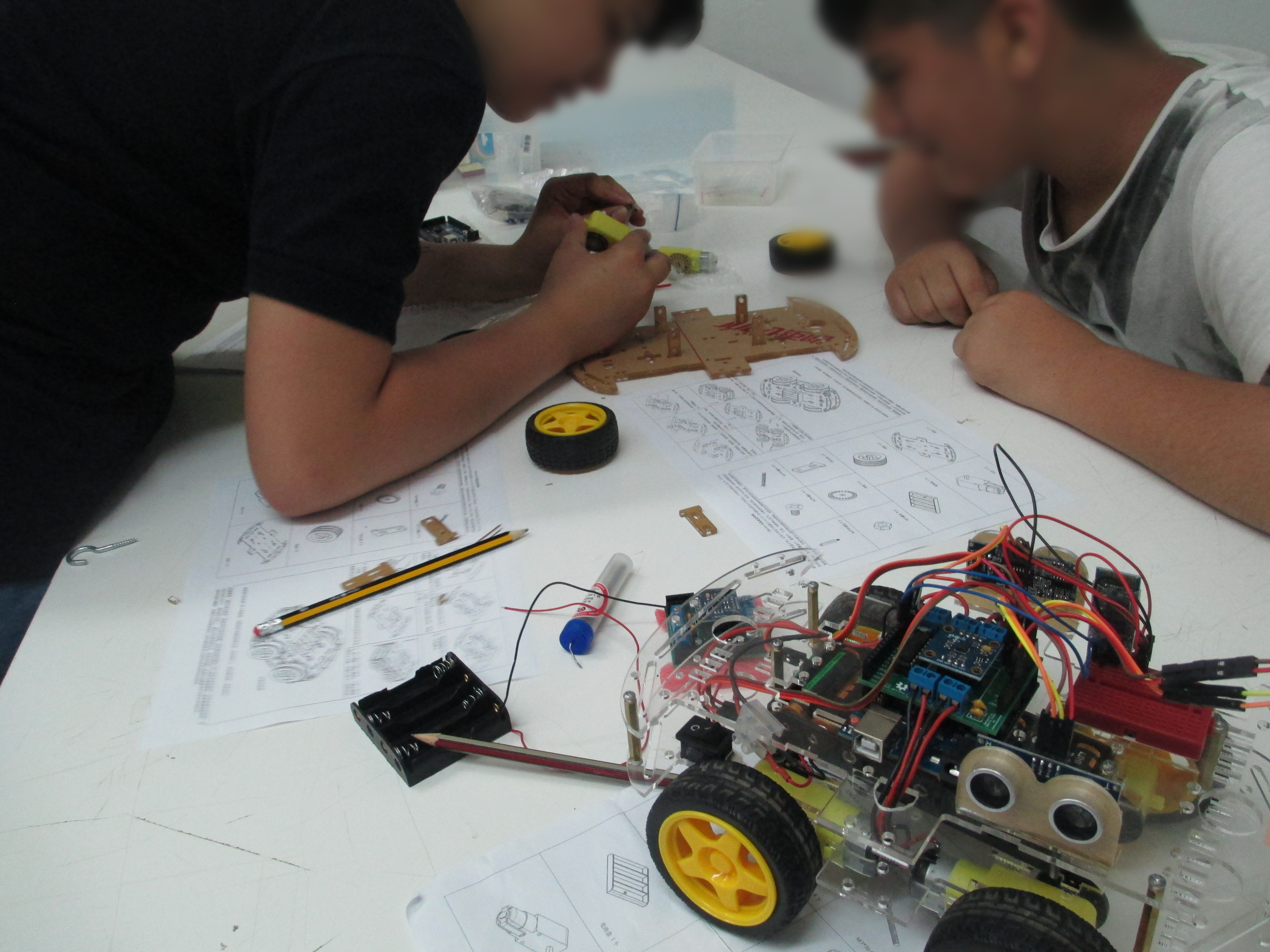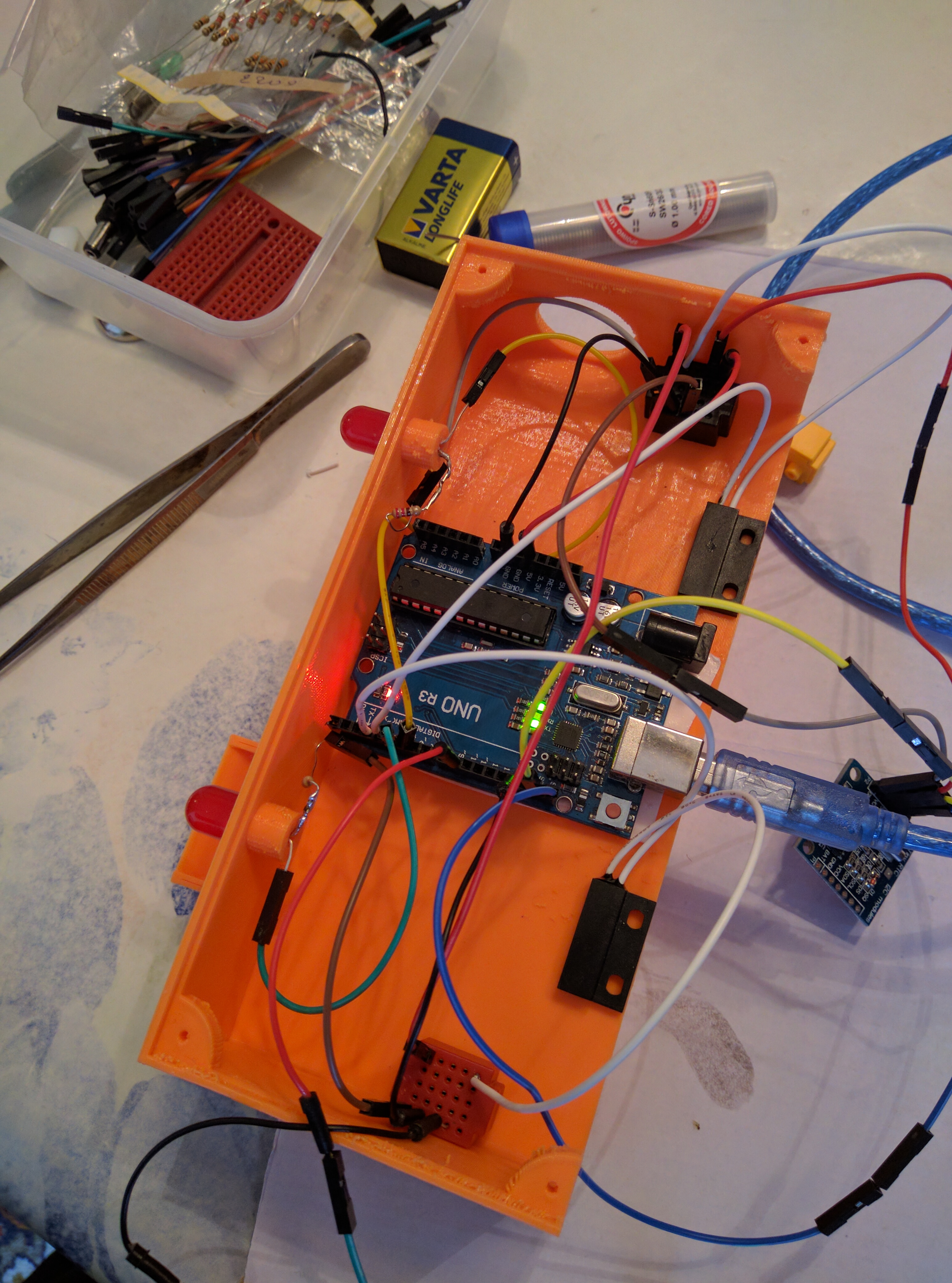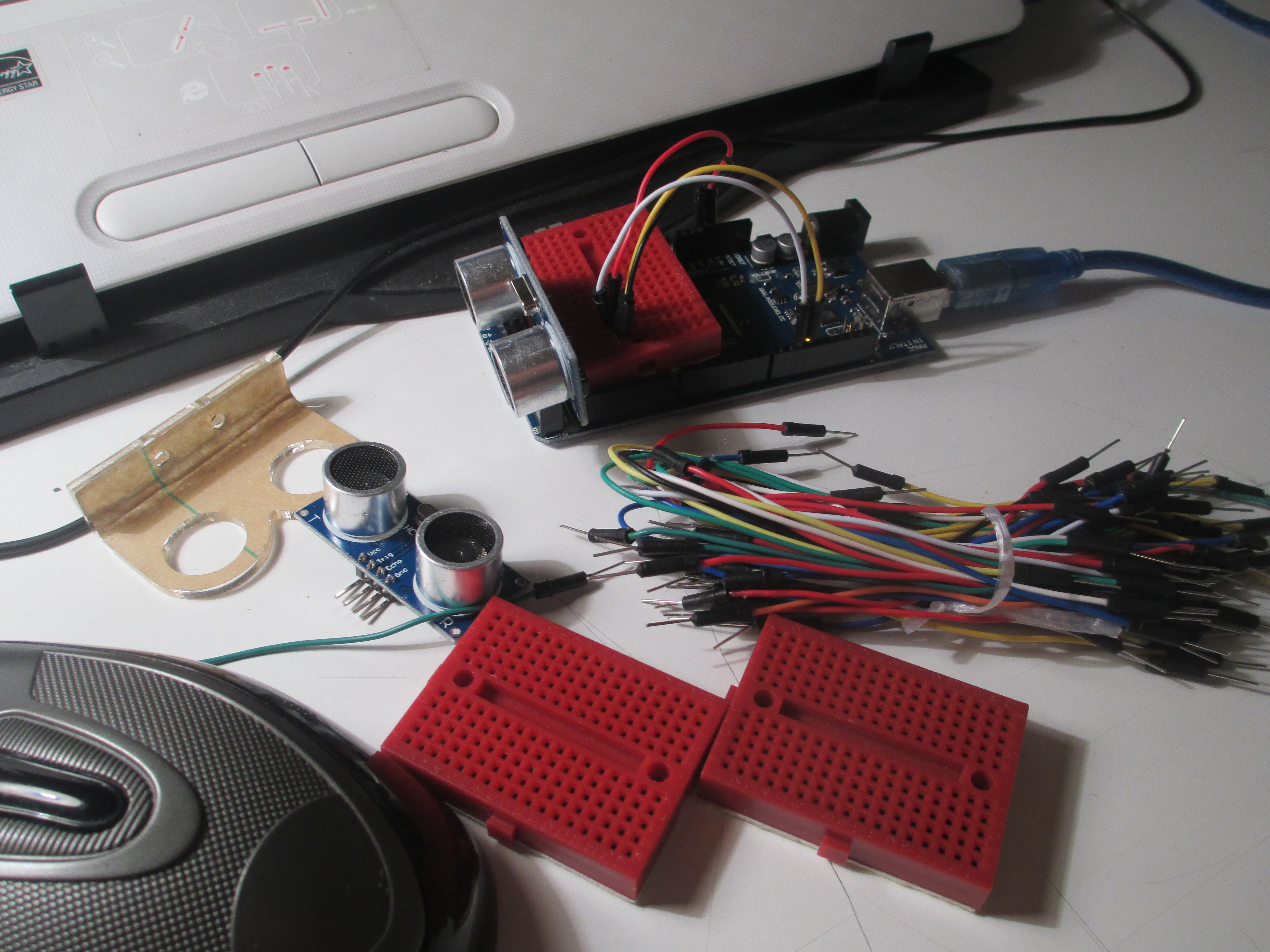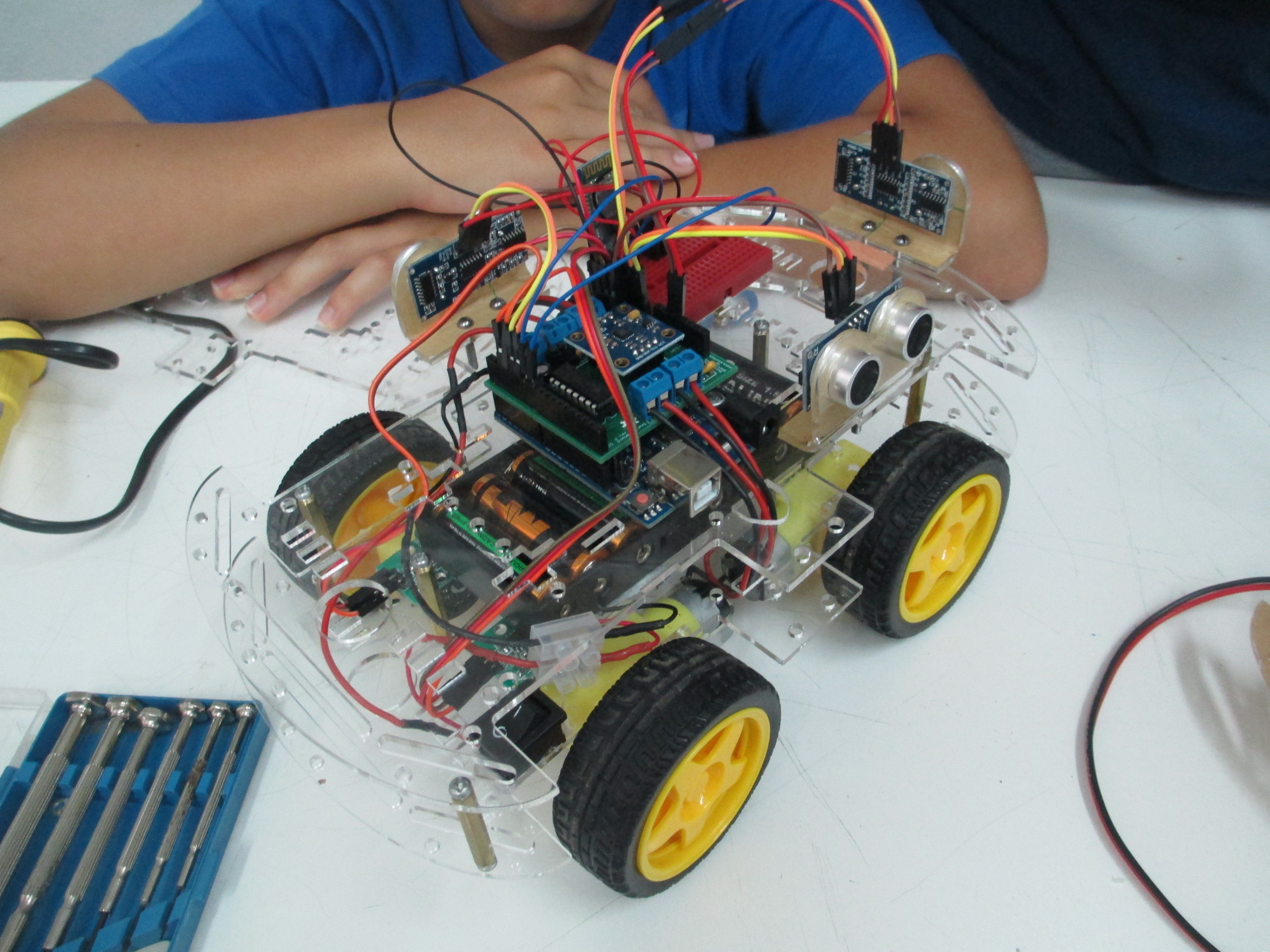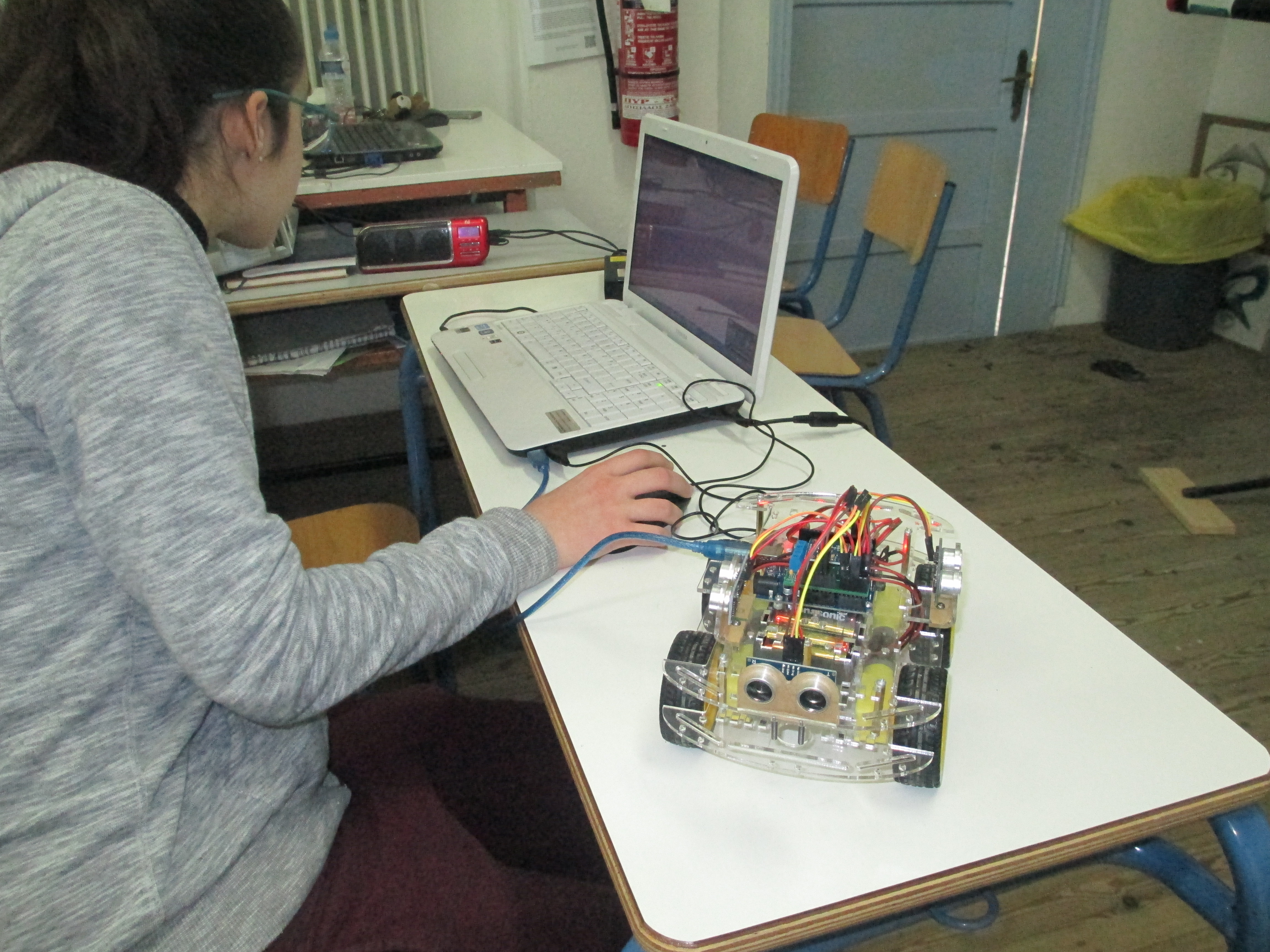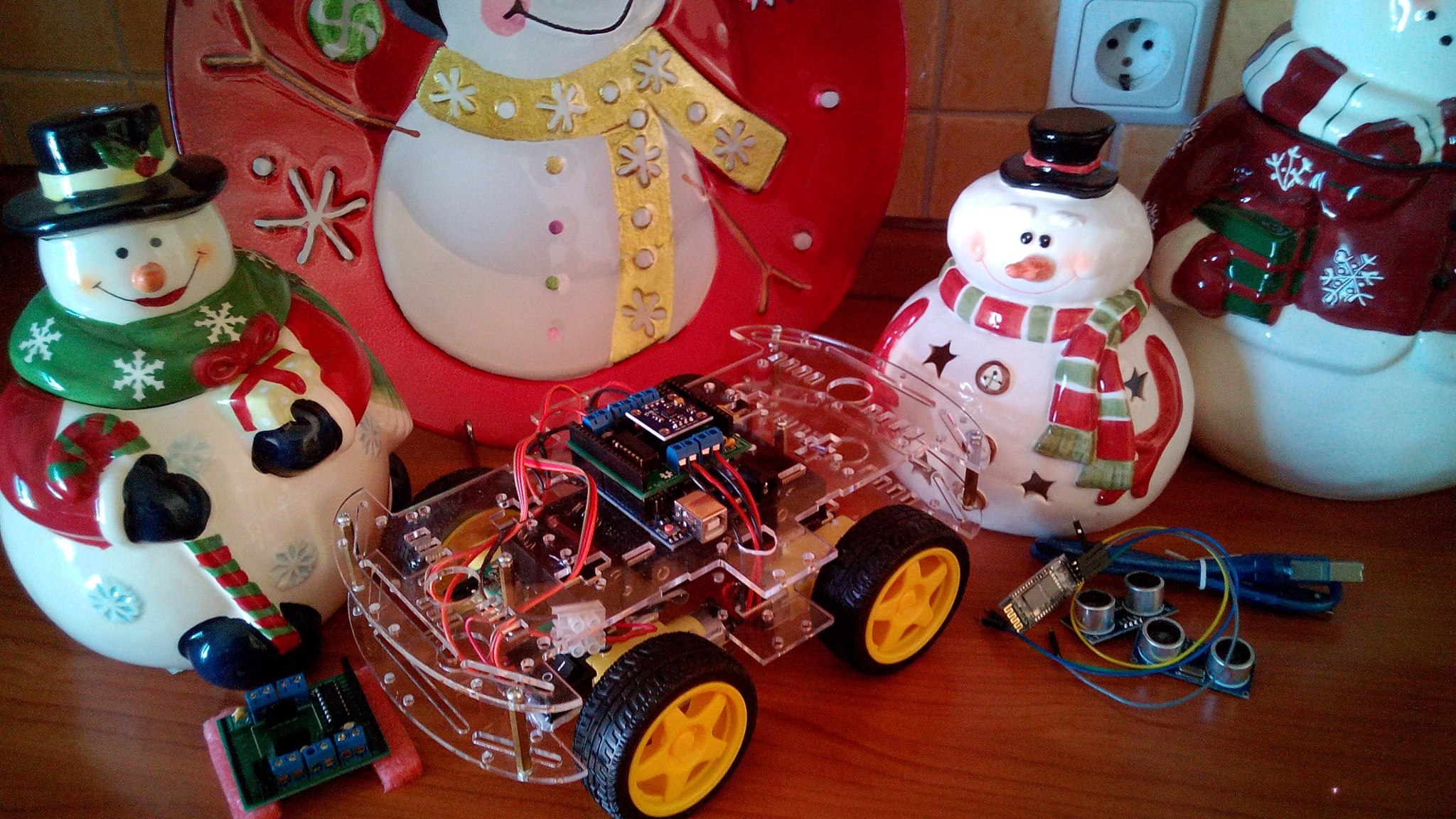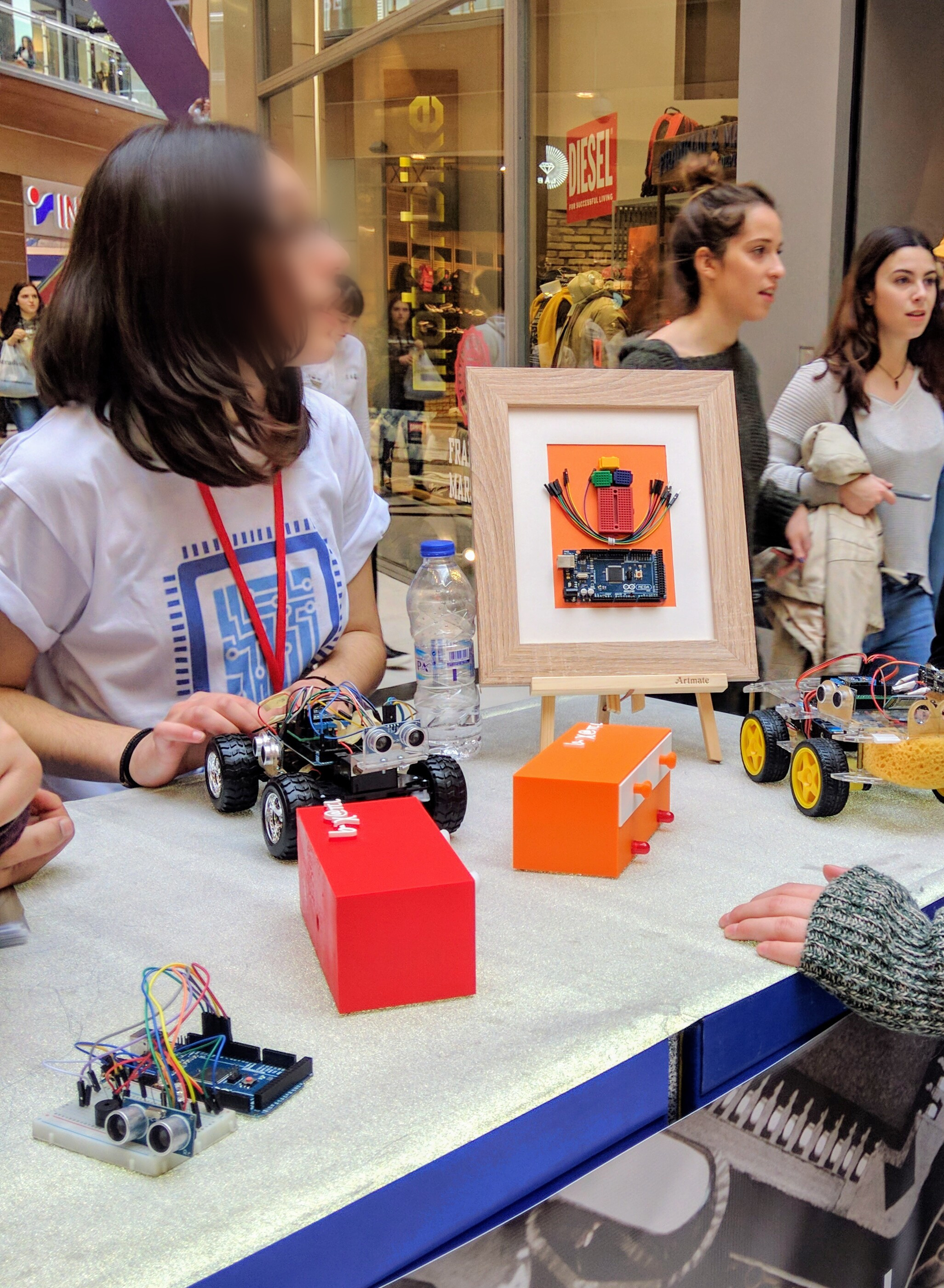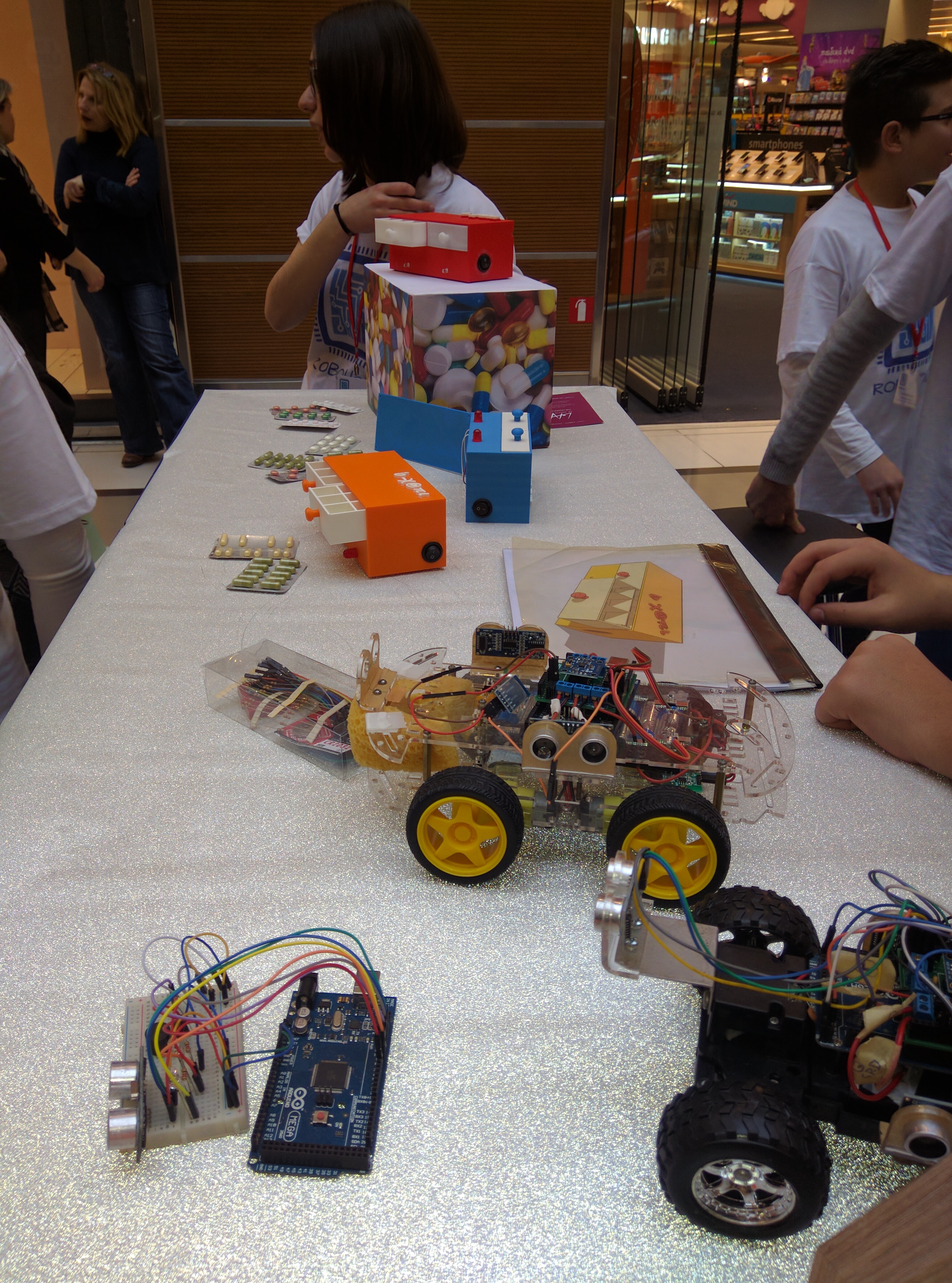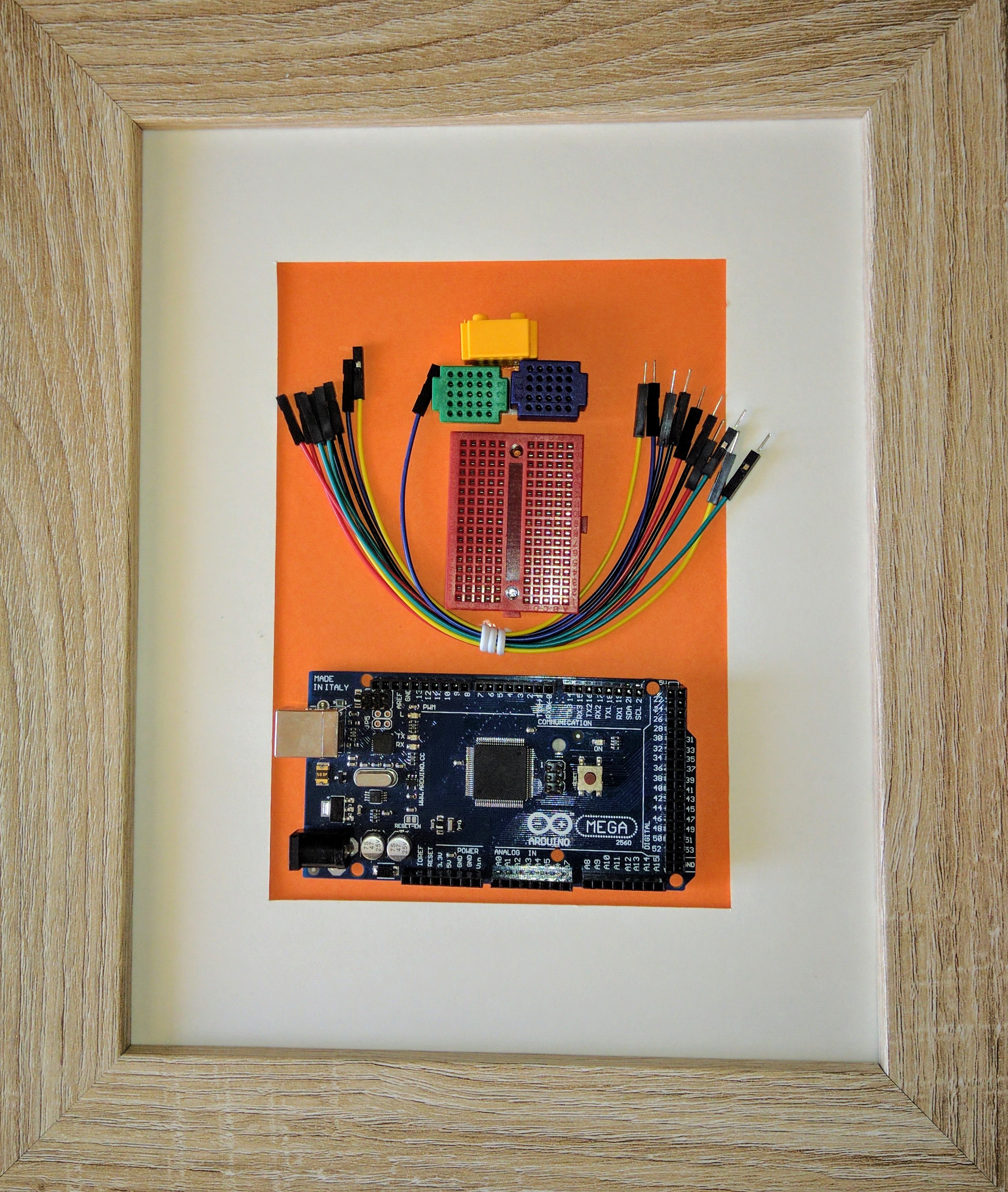Young Makers make the headlines in Greece
04 March 2017
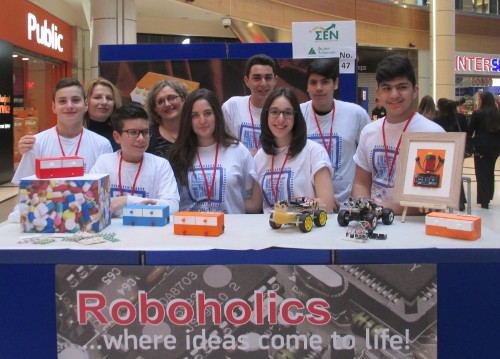
During the last one year and a half I have been part of a voluntary initiative between the University of Gothenburg and the 1st Gymnasium of Rhodes which aims to introduce secondary school students to STEM through Maker and T-shaped education. As the first cycle of this project comes to a conclusion, it is time to write a short retrospective experience report. Let’s take it from the beginning.
During the autumn of 2015 along with the secondary school teacher Aggeliki Nikolaou from the 1st Gymnasium of Rhodes and associate professor Imed Hammouda from the University of Gothenburg, we took the decision to undertake an initiative that would introduce students to STEM in a different way. The students were tasked to think like Makers and get acquainted with various sought-after skills in the industry, like software engineering, agile processes, product development, 3D modeling and printing.
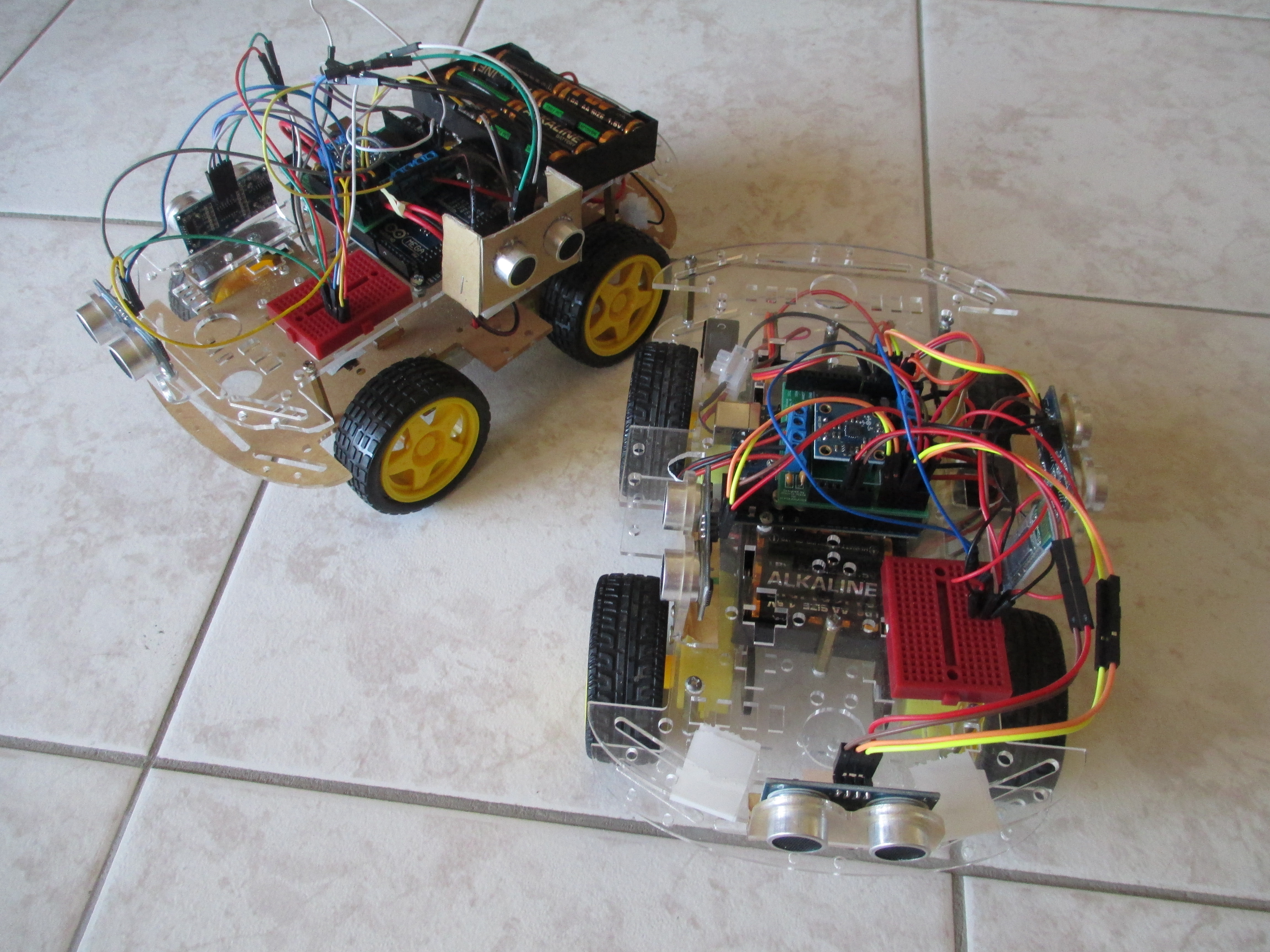
To kick this off the students, who called themselves Roboholics, were tasked to create an autonomous vehicle that would be able to drive itself around a track. They would adopt the Smartcar platform, also used by undergraduate students in the University of Gothenburg, as the software and hardware basis of their vehicle. The ultimate goal was admittedly very ambitious (see working examples), but precisely this was the strongest incentive for the young Makers.
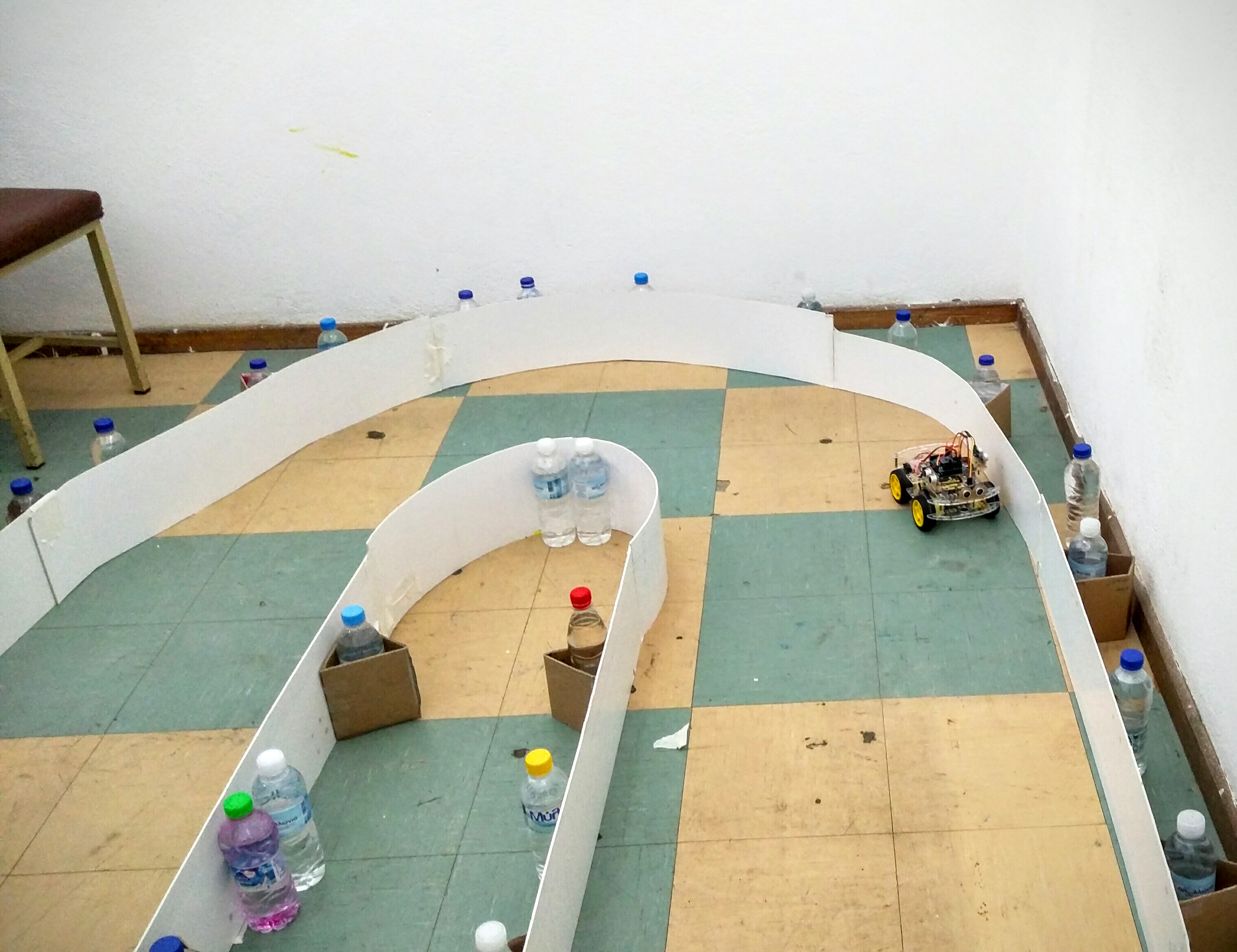
The students held weekly meetings during weekends and after school to work on their autonomous car. They also received a series of workshops and exercises to enhance their programming skills, as they had practically no previous knowledge. For the exercises, we used CodeCombat for gamified learning, Youtube videos for tutorials and assignment descriptions, an Arduino simulator, GitHub Classroom and deployed code on the actual car when necessary. The assignments aimed to quickly ramp up their coding abilities and prepare them for the primary goal, which was to drive autonomously around the track. Watch a video from their efforts below.
From my point of view, the main difficulty was to convince the students to abandon the “school mindset” and stop seeing this as “a class” where they were expected to passively accept knowledge. In this setup, they had to seek knowledge, they had to “learn how to learn” and, as the utilized material is open source, benefit from the international community. It was very challenging to get most students to practice and work by themselves, outside the weekly meetings. Thinking of it now, this mentality is even prevalent on a university level, so it should not come as a surprise. After all, students at that age in Greece are typically busy with all the extra (private) classes they have to take to achieve top performance, therefore expecting them to teach themselves programming on their spare time is not very feasible.

The next most significant impediment we faced was the physical absence of a person with IT knowledge that would be able to provide on-the-spot assistance, answer questions or correct common mistakes. No matter how much we automate teaching and evolve e- and distance learning, I believe that the presence of an educator is nearly irreplaceable under most circumstances. We often used Skype to communicate with the students, however this was not always enough, especially since the quality of the connection was frustratingly far from optimum most of the times. That being said, this was a very rewarding experience as one could witness the perspective of students shifting to that of inventors, engineers and entrepreneurs.
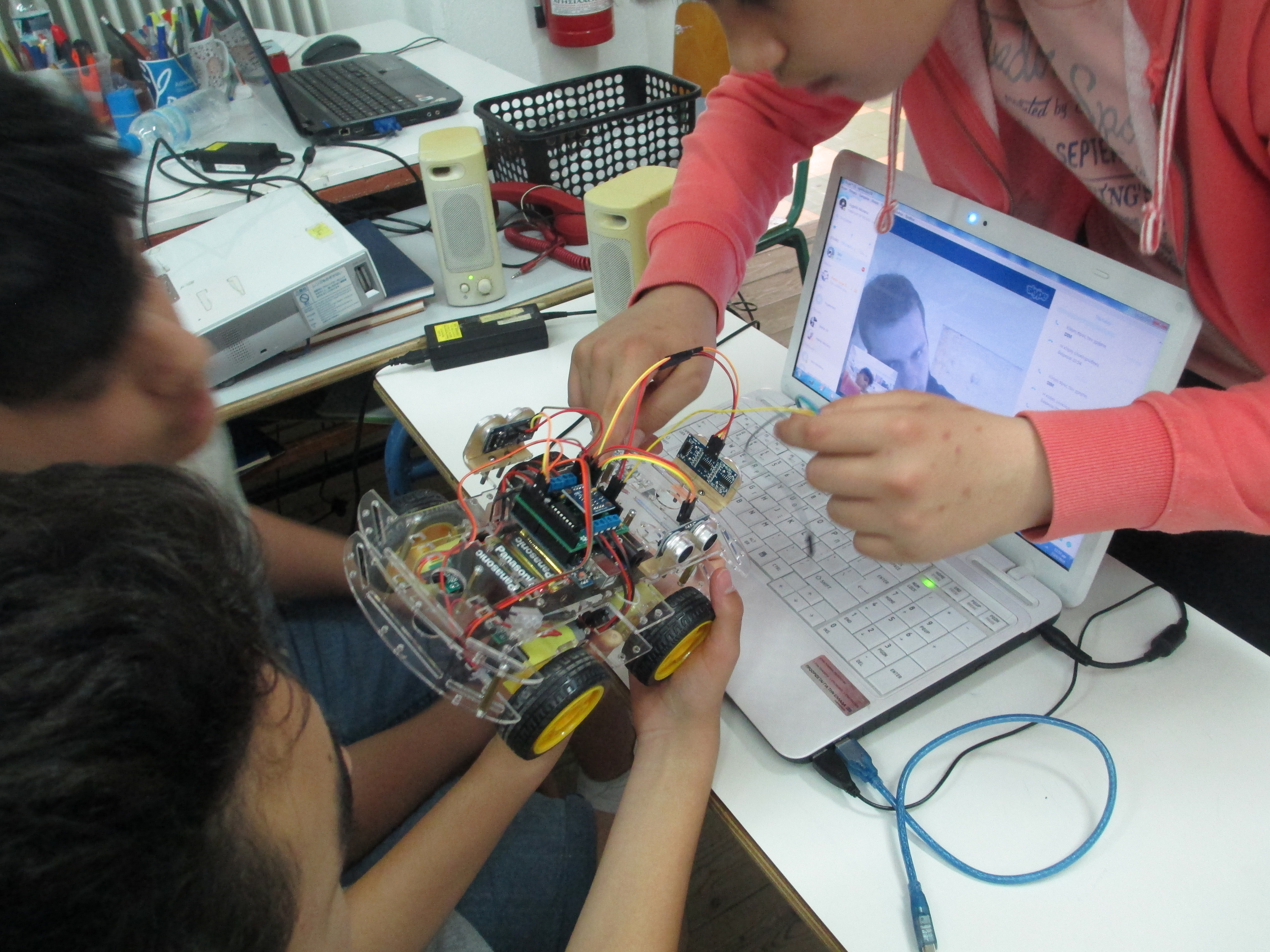
Additionally, the team created a video which elaborated on how they used Internet to acquire information and help on the development of their vehicle which won the first prize on a school competition regarding the “Safer use of Internet’ [Rodiaki]. Here you can watch the video they made (in Greek).
About a year in the project the volunteer teacher from Greece, Aggeliki, found out about a youth entrepreneurship and innovation competition among schools in Greece and expressed the interest to enter. Her and the students came up with the idea, I deemed it feasible for the students’ level of expertise and the team pivoted from the development of an autonomous vehicle to creating a smart pillbox that will remind its users to take their pills on time.
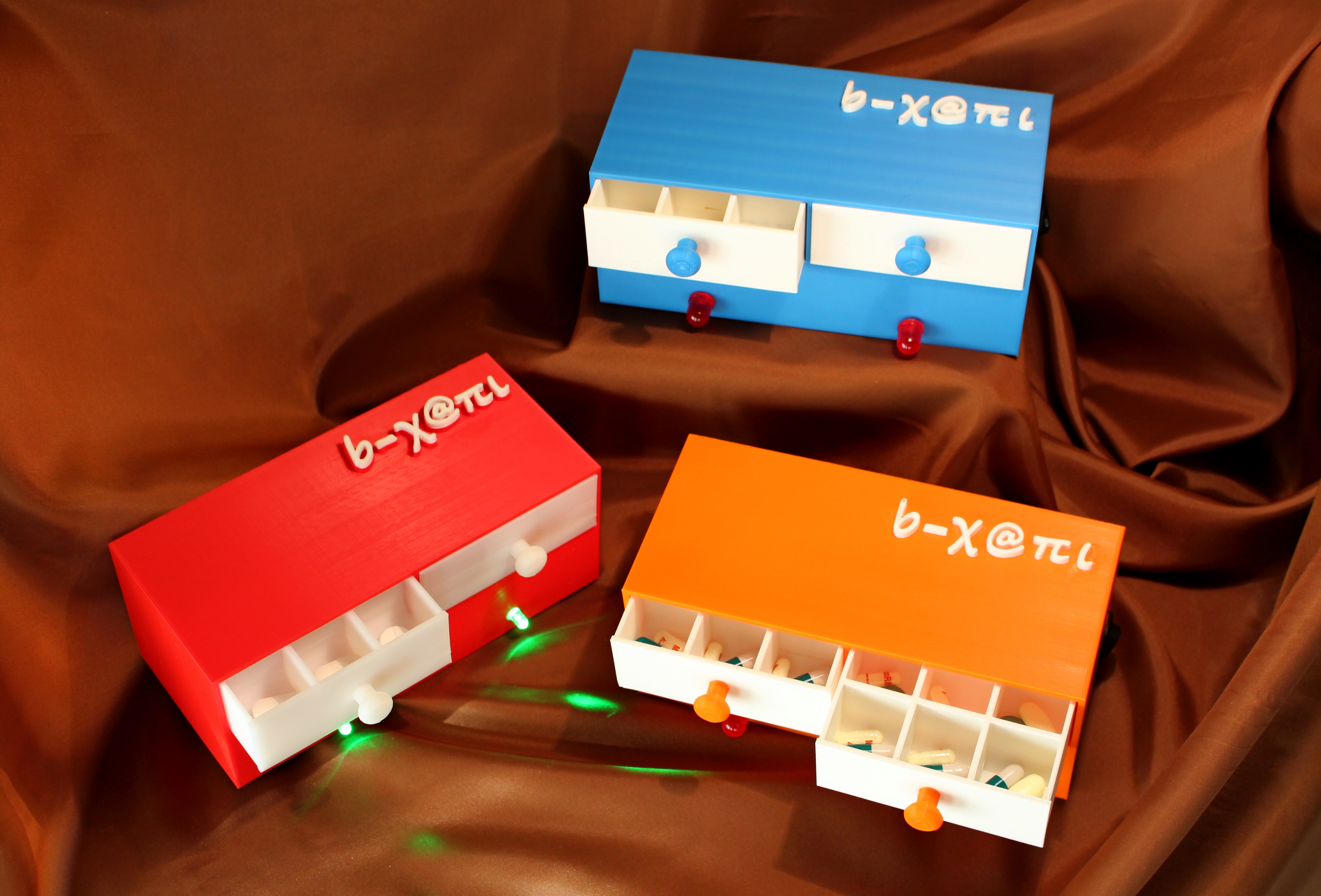
This turn, proved to be a very successful decision, with the team ending up to be featured live on many major and local TV channels in Greece, most of mainstream news websites and even on the front page of one of the largest newspapers! This time, the product involved less technical difficulties and offered a great chance for the students to be introduced into 3D modeling and the development of a could-be commercial product.

They developed “Β-χ@πι”, which is pronounced as “be happy” and is a wordplay with the Greek word for “pill” that sounds like the word “happy” in English. I will refer to it as “B-hapi” from now on as the Greek font on this blog is not the best. B-hapi is a 3D printed box with an Arduino inside it as the “brain”. Magnetic reed switches enable the microcontroller to determine whether each shelf is opened or closed, an RTC clock is providing the time and two LEDs along with a buzzer signal when it is time to open one of the shelves and take a pill. Additionally, an HC-06 Bluetooth module is used to communicate with an Android application which serves as the user interface and was created with MIT’s App Inventor. The code consists of a simple state machine which determines the current state of the box and handles the transitions to the next one. 
This time, since the students were more experienced with code they found the biggest obstacle to be that of designing the 3D printed box, in a way that our 3D printer could handle it and the product would be usable enough. A bunch of (failed) revisions were made as we all lacked experience on the subject, but eventually things worked out and produced an aesthetically and functionally pleasing result!
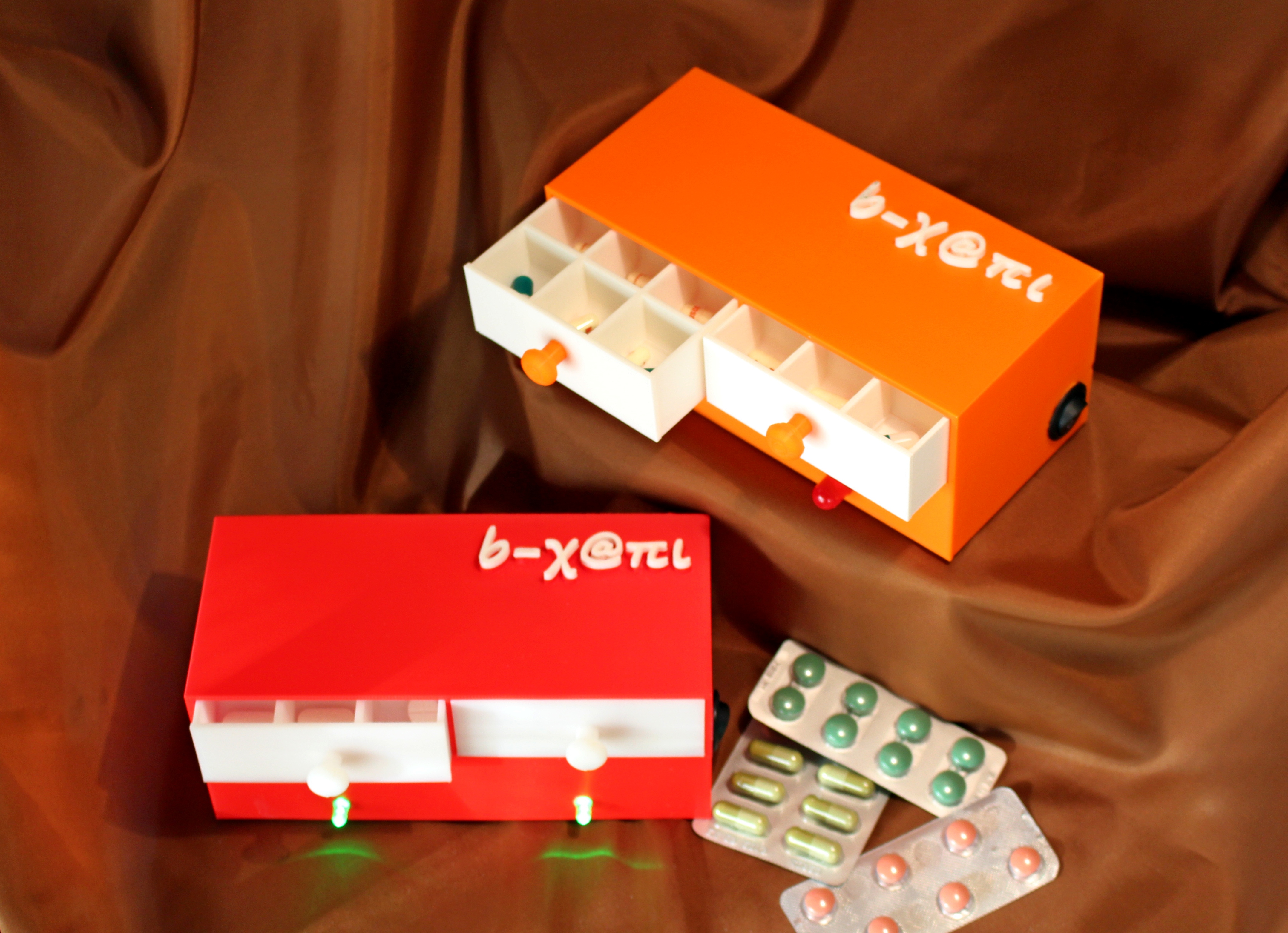
Their efforts did not go unnoticed and they received a surprisingly large coverage by mainstream Greek media (e.g. [Huffington Post], [ERT], [NewsIT], [Rodiaki], [To Honi]). People were very surprised and excited with the innovative aspects that a small team of volunteer students could implement, despite being based on a remote island. And all this achieved, with the very limited resources a public school can offer for extra-curricular activities. Their latest success, was the coverage on an article (in Greek) and the front page of ”Ethnos”, which is one of the largest and most known newspapers in the country.
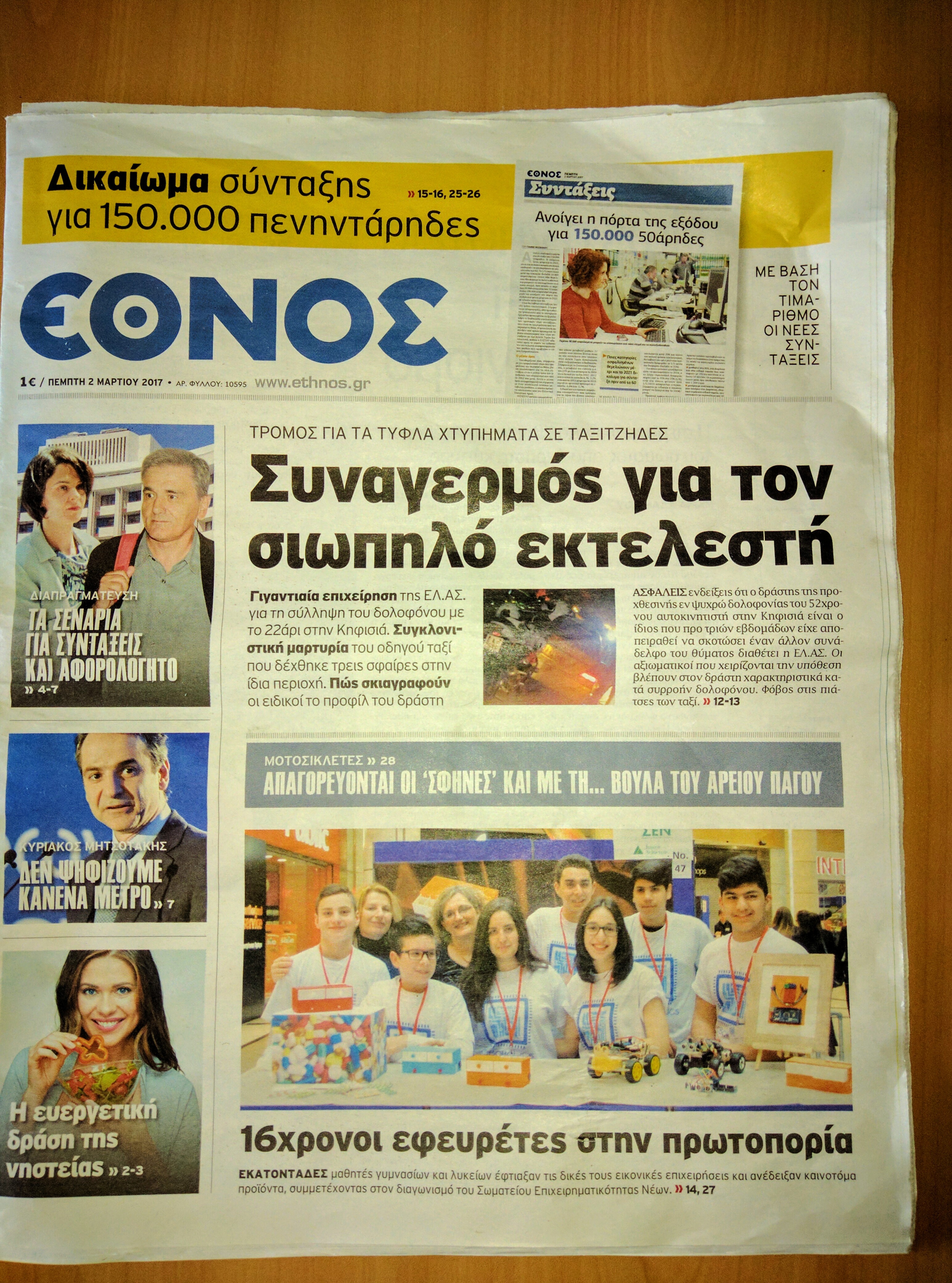
Furthermore, below you can find some of the TV coverage on B-hapi. The videos are in Greek but some of them have English subtitles.
Finally, a short overview of the team’s activities, including both the development of the autonomous vehicle and B-xapi.
So what is next? Find sponsors and/or volunteers to help! The students insist on continuing with the development of the autonomous vehicle, which they find more intriguing than the box. However I consider the technical challenges of such a project as well as the absence of a dedicated IT educator to be showstoppers. With the market literally begging for related skills, it would be a loss if we do not cultivate the interest and talent of these motivated young students…
Finally, I would like to thank the students who have made this initiative come to life and thrive as well as the tutors who have voluntarily provided valuable help: Lefteris Spartalis, Konstantinos Manolios and Nikos Chalvatzakis. Some more pictures from the project follow.
